|
The Industrial Era 1982 - 1983 This was the period that Commodore
starts its success story with the Commodore Vic20 and C64. Computer architecture in this period still belongs to the Third Generation of computers. |
pre history | antiquity |
pre industrial era | industrial
era
| 1947 | 1950 | 1952 | 1955 | 1958 | 1961 | 1963 | 1965 | 1969 | 1970 | 1972 | 1974 | 1976 |
| 1978 | 1980 | 1981 | 1982 | 1984 | 1986 | 1989 | 1991 | 1993 | 1994 | 1996 | 2000 | 2002 |
| Related Articles |
| Related Resources |
history of video games |
 |
|
![]() Sinclair research developed the
ZX spectrum, the successor to the ZX81. Compared with the ZX81 the spectrum
has 16 or 48 Kb of memory, displayed colors on the screen but still used cassettes
as a way of data storage.
Sinclair research developed the
ZX spectrum, the successor to the ZX81. Compared with the ZX81 the spectrum
has 16 or 48 Kb of memory, displayed colors on the screen but still used cassettes
as a way of data storage.
![]() Ashton Tate released the database
program dBase II. This program would be extremely popular for the next 15 or
so years.
Ashton Tate released the database
program dBase II. This program would be extremely popular for the next 15 or
so years.
![]() Peter Norton Computing introduced
Norton Utilities. This program will be used by the computer savvy people and
served as a prime hacker tool.
You could when you knew how, even repair your hard disk's FAT (file allocation
table) with it.
Peter Norton Computing introduced
Norton Utilities. This program will be used by the computer savvy people and
served as a prime hacker tool.
You could when you knew how, even repair your hard disk's FAT (file allocation
table) with it.
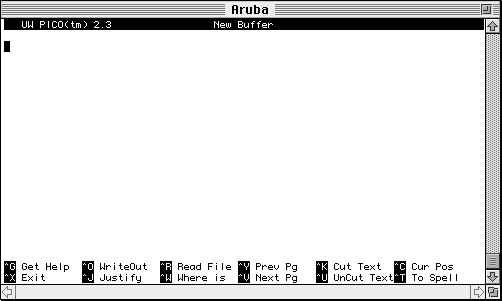
![]() The Sun Microcomputer
corporation is founded and releases the SunOS operating system based on the
Unix dialect 4.2 BSD and 4.3 BSD
The Sun Microcomputer
corporation is founded and releases the SunOS operating system based on the
Unix dialect 4.2 BSD and 4.3 BSD
![]() John Warnock
and Chuck Geschke engineers from Rank Xerox found Adobe company.
John Warnock
and Chuck Geschke engineers from Rank Xerox found Adobe company.

![]() Epson America
constructs the HX-20 it is the first laptop computer commercially available.
It uses a CMOS version of the 6801, has 16 Kb RAM and a small display.
Epson America
constructs the HX-20 it is the first laptop computer commercially available.
It uses a CMOS version of the 6801, has 16 Kb RAM and a small display.
![]() Compaq Computers
is founded by Rod Canion, Jim Harris and Bill Murto. They design the company's
product at a local "House of Pies" and start by bringing out the first
IBM -PC clone. (7)
Compaq Computers
is founded by Rod Canion, Jim Harris and Bill Murto. They design the company's
product at a local "House of Pies" and start by bringing out the first
IBM -PC clone. (7)
![]() Van Suwannukul
invents the Hercules Graphics adapter card.
Van Suwannukul
invents the Hercules Graphics adapter card.
![]() Jim Clark
founds Silicon Graphics Inc. He will resign in 1994 to start Netscape Inc.
Jim Clark
founds Silicon Graphics Inc. He will resign in 1994 to start Netscape Inc.
![]() As a result
of mass production techniques in the field of microchip manufacturing, the first
affordable machines with 128 Kb of memory appear on the market.
As a result
of mass production techniques in the field of microchip manufacturing, the first
affordable machines with 128 Kb of memory appear on the market.
![]() Japan enters
the supercomputer arena. Under
the supervision of the Japanese Ministry of Trade and Industry (MITI) a project
called "The fifth generation computer project" is launched. The initial
budget for this project is 7 million US$ and should be leading to the Japanese
to supremacy in the field of supercomputers. Though many products derives from
this program the time seemed not ripe for artificial intelligence and hyper
computers. The project will be canceled in 1993 but some parts or spin off products
are transferred to other projects. Not until 2002 Japan will gain the indisputable
advance in supercomputing
Japan enters
the supercomputer arena. Under
the supervision of the Japanese Ministry of Trade and Industry (MITI) a project
called "The fifth generation computer project" is launched. The initial
budget for this project is 7 million US$ and should be leading to the Japanese
to supremacy in the field of supercomputers. Though many products derives from
this program the time seemed not ripe for artificial intelligence and hyper
computers. The project will be canceled in 1993 but some parts or spin off products
are transferred to other projects. Not until 2002 Japan will gain the indisputable
advance in supercomputing
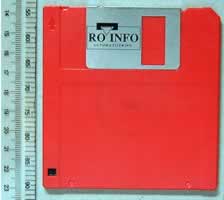
![]() Sony introduced the 3.5inch (88.9mm)
micro floppy. The single sided version is able to contain 360 Kbytes. The double
sided, as shown above, is able to store 720 Kbytes.
Sony introduced the 3.5inch (88.9mm)
micro floppy. The single sided version is able to contain 360 Kbytes. The double
sided, as shown above, is able to store 720 Kbytes.
![]() Many manufacturers tried to make
their microcomputers compatible with IBM's"open architecture", in
which they succeeded very well. And as a direct result of this development the
computer market was led into fierce competition. Here the "big players"
however seemed to loose on the smaller companies which were able to adapt much
quicker to a changing market as the big bureaucratic corporations.
Many manufacturers tried to make
their microcomputers compatible with IBM's"open architecture", in
which they succeeded very well. And as a direct result of this development the
computer market was led into fierce competition. Here the "big players"
however seemed to loose on the smaller companies which were able to adapt much
quicker to a changing market as the big bureaucratic corporations.
![]() Hewlett Packard introduced the
first "desktop mainframe", the HP 9000. This machine contained the
32-bit "superchip"'(43) technology
that was just as powerful as room size computers from the 1960’s. This
was the first mini computer specially designed for a multi-user environment.(44)
Hewlett Packard introduced the
first "desktop mainframe", the HP 9000. This machine contained the
32-bit "superchip"'(43) technology
that was just as powerful as room size computers from the 1960’s. This
was the first mini computer specially designed for a multi-user environment.(44)
![]() Disney is the first to use computer-generated
graphics. Their first product is Tron a hybrid form between
actors and overplayed graphics
Disney is the first to use computer-generated
graphics. Their first product is Tron a hybrid form between
actors and overplayed graphics
![]() With the introduction of the
80286 CPU Intel continue their development of the 8086 chip. New features: REAL
MODE (for compatibility with the 8086), PROTECTED MODE (enables extended memory
up to 16 Mbytes), Multi Tasking and Multi User Operation. The processor contains
134.000 transistors and has a speed of 1.5 MIPS(9) see also
Moore's Law
With the introduction of the
80286 CPU Intel continue their development of the 8086 chip. New features: REAL
MODE (for compatibility with the 8086), PROTECTED MODE (enables extended memory
up to 16 Mbytes), Multi Tasking and Multi User Operation. The processor contains
134.000 transistors and has a speed of 1.5 MIPS(9) see also
Moore's Law
![]() Mitchell Kapor found Lotus Development
Corp. Lotus 1-2-3 is designed by one man: Jonathan Sachs, and launches in October
1982. The program is specifically designed for the IBM PC. It runs 10 times
faster than any other computer program on the market at the time.
Mitchell Kapor found Lotus Development
Corp. Lotus 1-2-3 is designed by one man: Jonathan Sachs, and launches in October
1982. The program is specifically designed for the IBM PC. It runs 10 times
faster than any other computer program on the market at the time.
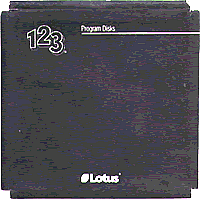
The name 1-2-3 referred to the fact that this program combines three functions in one computer program: A spreadsheet, a small file management utility and a graphic module that made it possible to visualize data. This program determines the way of doing calculations at the office for the next decade.
![]() Introduction of MS-DOS 1.1.
This version also supports double sided diskettes.
Introduction of MS-DOS 1.1.
This version also supports double sided diskettes.

![]() In 1982, Ray
Noorda establishes Novell in Provo, Utah to design and market PC "networking"
software called Novell NetWare. With the NetWare Network Operating System (NOS),
PCs could be used to share files, printers, and other system peripherals among
a group of users. DOS at this time, provides no support for network connectivity.
(26) Novell is the first to realize that PCs can be inter-connected
via interfaces (boards) and a special operating system enabling one or more
PCs to act as a SERVER serving client PCs.
In 1982, Ray
Noorda establishes Novell in Provo, Utah to design and market PC "networking"
software called Novell NetWare. With the NetWare Network Operating System (NOS),
PCs could be used to share files, printers, and other system peripherals among
a group of users. DOS at this time, provides no support for network connectivity.
(26) Novell is the first to realize that PCs can be inter-connected
via interfaces (boards) and a special operating system enabling one or more
PCs to act as a SERVER serving client PCs.
![]() The physicist
Richard Feynman conceives the idea of a quantum
computer, a computer that uses the effects of quantum mechanics.
The physicist
Richard Feynman conceives the idea of a quantum
computer, a computer that uses the effects of quantum mechanics.
![]() Some years ago (1978) engineers
from Technical Design Labs came out with a processor also known as the "General".
Neil Colvin (Phoenix) and Roger Amidon were the architects.(51)
Some years ago (1978) engineers
from Technical Design Labs came out with a processor also known as the "General".
Neil Colvin (Phoenix) and Roger Amidon were the architects.(51)
![]() Epson first tries its hand at
manufacturing PCs with the Epson QX-10 and the CP/M
based operating system. A promising machine, but sorry for Epson, 8 bit CP/M
machines are already outdated.
Epson first tries its hand at
manufacturing PCs with the Epson QX-10 and the CP/M
based operating system. A promising machine, but sorry for Epson, 8 bit CP/M
machines are already outdated.
The first prototypes reach the USA in mid 1982's. It bears a close resemblance
to an American computer, the General, which is designed in 1978 by Technical
Design Labs. But TDL couldn't raise the funds needed for production and eventually
they went out of business. Two of TDL's founders, Chris Rutkowski and Roger
Amidon, joined Shinshu Seiki (for father of Epson) and worked on the
preliminary QX-10 design. (52)
Software for the QX-10 is developed by Rising Star Industries. This company
is founded at the end of 1982 (by Epson?), its name is derived from the Rising
Sun of Japan and the Stars and Stripes of USA(52)
However where all other integrated DOS packages fail, the VALDOCS
package that is sold in combination with the Epson QX-10 proves to be a huge
success. VALDOCS include a word processor (with keyboard macro’s and multiple
screen formats), a spreadsheet, a database and communication modules. And to
top all of that: a desktop manager with an address book, mailing list manager,
notepad, calculator and more is included. You can switch from one program to
another with just pressing a button.
|
BUT "I spent two hours trying out the Epson QX-10 with VALDOCS. VALDOCS is a great idea. However, it is poorly implemented; the machine is slow, slow, slow. Unfortunately the VALDOCS program is written in a FORTH dialect instead of assembly language.. as it is now, I found it to be a disappointment."~ John K, Lewiston, ID Users were just not up to it to learn a complete environment and so the concept of a fully integrated environment was just too much for most of them. Also software designers and programmers did not have the methodology and technology to make this project more or less bug free That killed appetite as well. |
![]() Marketing experts at the IBM
company make an error in judgment. The estimated computers sales for the next
decade is already realized.
Marketing experts at the IBM
company make an error in judgment. The estimated computers sales for the next
decade is already realized.
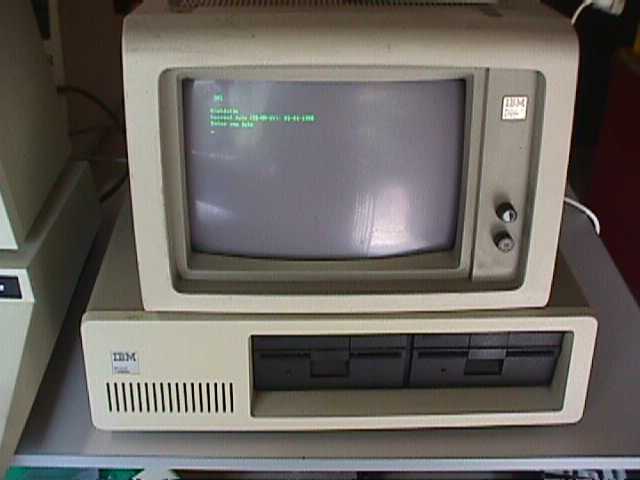
![]() IBM puts the IBM PC XT on the
market. This machine sets the trend of PC architecture in the 1980’s. The
machine has an improved BIOS and is equipped with a 10 Megabyte hard disk. Donald
Estridge has been the team's (dirty dozen) manager.
IBM puts the IBM PC XT on the
market. This machine sets the trend of PC architecture in the 1980’s. The
machine has an improved BIOS and is equipped with a 10 Megabyte hard disk. Donald
Estridge has been the team's (dirty dozen) manager.
![]() The introduction of the IBM PC
Jr. becomes a huge flop. The machine is intended for the consumer market but
nobody wanted to have this one at home. The machine is just too expensive for
what it offered, compared to the competition at least.
The introduction of the IBM PC
Jr. becomes a huge flop. The machine is intended for the consumer market but
nobody wanted to have this one at home. The machine is just too expensive for
what it offered, compared to the competition at least.
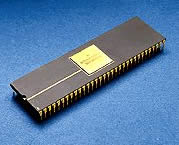
![]() Motorola's
68000 chip proves to be very suitable to build advanced computers and also forms
the heart of laser printers. This family of CPU's will also be very well suited
for graphical oriented environments.
Motorola's
68000 chip proves to be very suitable to build advanced computers and also forms
the heart of laser printers. This family of CPU's will also be very well suited
for graphical oriented environments.
![]() Philips, a
Netherlands based electronic manufacturer, brings out a PC for the home market.
Based on a Z80 CPU, it contains 16K RAM and slots for 2 modules and 1 micro
tape an advanced design for this period in time. The system cost US$ 365 (Fl.
1495 ) monitor not included(2). But as many of Philips' fine
ideas the marketing gets again in the way of promoting this machine on the local
market.
Philips, a
Netherlands based electronic manufacturer, brings out a PC for the home market.
Based on a Z80 CPU, it contains 16K RAM and slots for 2 modules and 1 micro
tape an advanced design for this period in time. The system cost US$ 365 (Fl.
1495 ) monitor not included(2). But as many of Philips' fine
ideas the marketing gets again in the way of promoting this machine on the local
market.
![]() Commodore has a new premiere:
a portable color computer: the Commodore SX64, based on the C64.
Commodore has a new premiere:
a portable color computer: the Commodore SX64, based on the C64.
![]() Compaq offers the first portable
IBM-PC clone which is IBM software compatible. The exterior design looks like
a sewing machine case. The surface is made out of synthetic material but has
a steel frame inside. The biggest disadvantage of this machine is the fact that
it did not fit under airplane-seats and its full height disk drives are often
prone to failures.
Compaq offers the first portable
IBM-PC clone which is IBM software compatible. The exterior design looks like
a sewing machine case. The surface is made out of synthetic material but has
a steel frame inside. The biggest disadvantage of this machine is the fact that
it did not fit under airplane-seats and its full height disk drives are often
prone to failures.
![]() Microsoft announces
Windows and Multi-Tool Word - now known as Microsoft Word, but it takes over
two years before the product is on the shelves. Sounds like the usual spoof
ware.
Microsoft announces
Windows and Multi-Tool Word - now known as Microsoft Word, but it takes over
two years before the product is on the shelves. Sounds like the usual spoof
ware.
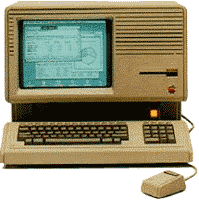
![]() During a shareholders
meeting Apple introduces the Apple LISA (Largely Integrated Systems Architecture).
LISA is intended to be the successor to the Apple II and is the first PC (micro
computer) based on a WIMP environment (Window, Icons, Mouse and Pull-down menus).
This machine is geared towards the professional market but the high retail price
(4500 US$) prevent the computer from becoming a success. Everything on the machine
is expensive: memory expansion of 512kb costs 400 US$.
During a shareholders
meeting Apple introduces the Apple LISA (Largely Integrated Systems Architecture).
LISA is intended to be the successor to the Apple II and is the first PC (micro
computer) based on a WIMP environment (Window, Icons, Mouse and Pull-down menus).
This machine is geared towards the professional market but the high retail price
(4500 US$) prevent the computer from becoming a success. Everything on the machine
is expensive: memory expansion of 512kb costs 400 US$.
![]() Introduction
of MS-DOS 2.0. This version also supported hard disks and subdirectories. MS-DOS
became more easier to use.
Introduction
of MS-DOS 2.0. This version also supported hard disks and subdirectories. MS-DOS
became more easier to use.
![]() MS-DOS 2.10
is released this version contains an international character set. Several manufacturers
will offer this version as a package deal along with the computer which is released
under the name MS-DOS 2.11 indicating that the operating system is modified
for machine specific hardware components, similar versions are called OEM versions.
MS-DOS 2.10
is released this version contains an international character set. Several manufacturers
will offer this version as a package deal along with the computer which is released
under the name MS-DOS 2.11 indicating that the operating system is modified
for machine specific hardware components, similar versions are called OEM versions.
![]()
| Last Updated on October 25, 2004 | For suggestions please mail the editors |
Footnotes & References